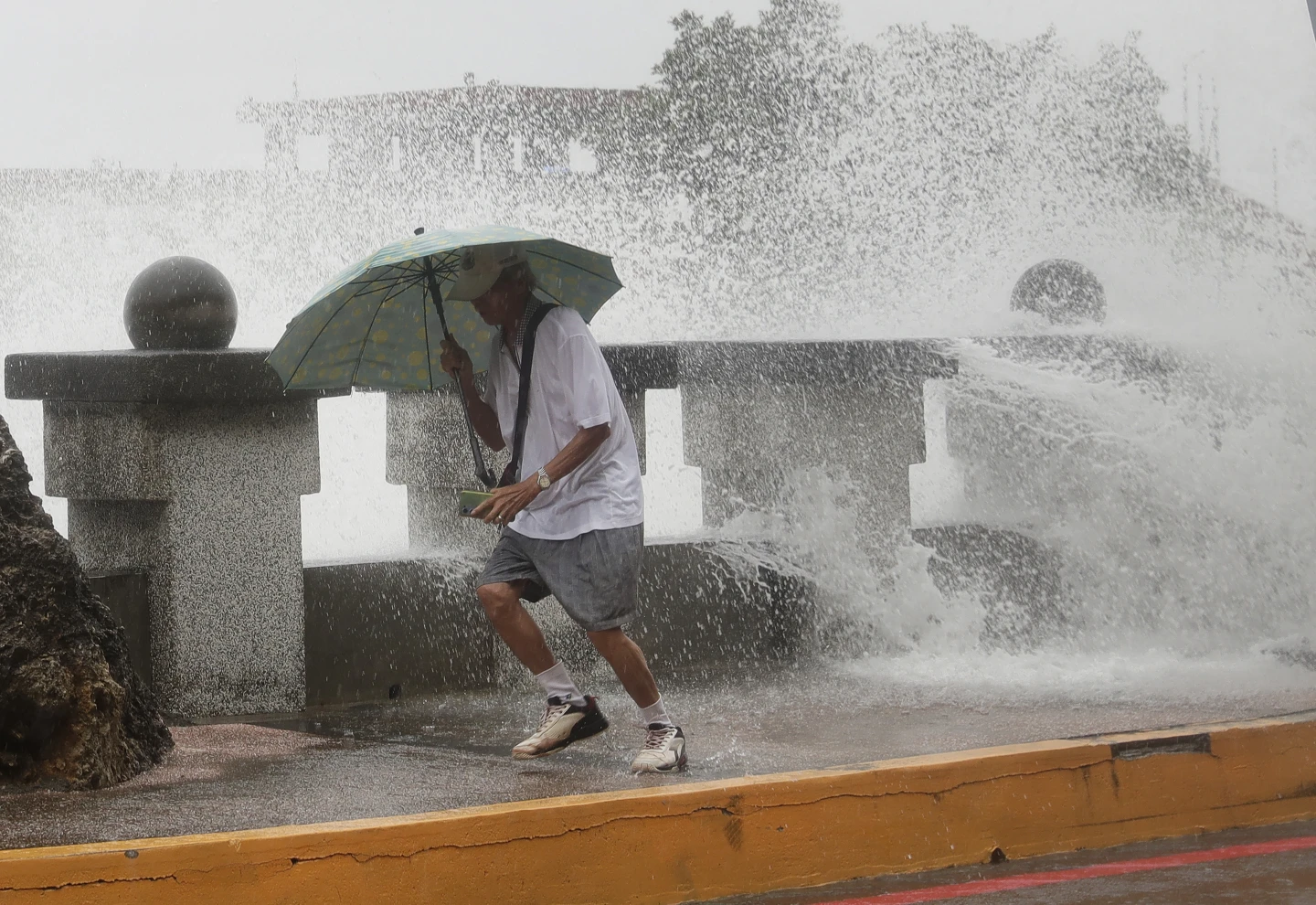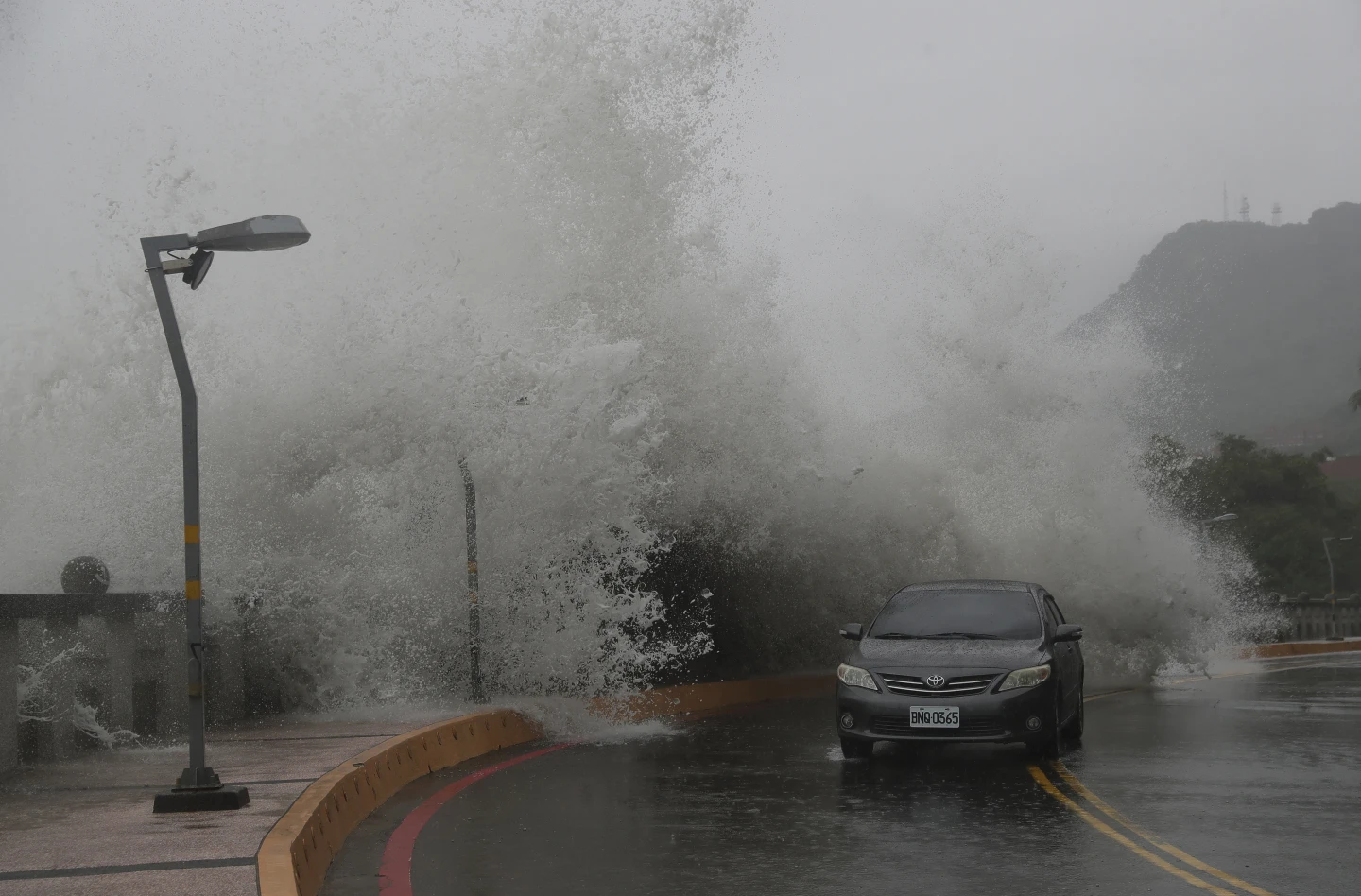Typhoon Krathon struck Taiwan’s southern city of Kaohsiung on Thursday, bringing with it torrential rains and powerful winds. The typhoon made landfall in the industrial Siaogang district around 12:40 p.m., carrying maximum sustained winds of 126 kph (78 mph) and gusts up to 162 kph (101 mph). As a result, trees were uprooted, streets were flooded, and schools and businesses were forced to close across the region.
The storm’s impact was most severe in the south, but it was expected to weaken into a tropical depression as it moved slowly northward, reaching Taipei by Friday before heading across the Taiwan Strait toward China.
Southern Taiwan, especially Kaohsiung, bore the brunt of Krathon’s slow advance, with warnings issued to residents to stay indoors and brace for potentially destructive winds and floods. The typhoon, moving at a slow pace of 4 kph (2.5 mph), brought severe weather over the preceding five days, prompting the evacuation of thousands from vulnerable mountainous and low-lying areas.
These weather disruptions led to two days of business closures, dealing a blow to Taiwan’s economy, particularly its high-tech industries that rely on foreign trade. In contrast, Taipei, located 350 kilometers (215 miles) to the north, experienced much milder effects, with only minor interruptions in daily life.

Typhoon Krathon Hits Kaohsiung With Heavy Rain and Winds, Causing Two Fatalities and Injuries Across Taiwan
As the storm approached, Taiwanese authorities sent mobile alerts to residents, advising them to take shelter from the storm’s dangerous winds. A Facebook warning was also posted, urging people not to go outside during the eye of the storm when weather conditions might temporarily improve, as the winds would intensify afterward.
The fire department reported that at least 123 people were injured across the island, with two fatalities confirmed—one due to a road accident in Taitung and another from a tree-trimming incident in Hualien. Additionally, two people were reported missing.
An unrelated fire at a hospital in Pingtung County early Thursday added to the toll of the day, claiming the lives of nine people due to smoke inhalation. The cause of the fire was still under investigation, and it was not immediately clear if the blaze had any connection to the typhoon.
With more than 40,000 troops on standby for rescue operations, Taiwan remained on high alert as heavy rains, particularly in the southern mountainous regions, threatened to trigger mudslides and landslides. Rainfall totals in some areas reached as high as 169 centimeters (5.5 feet) over the past five days.
Krathon had already caused devastation earlier in the week in the northern Philippines, where it killed four people and displaced thousands. While typhoons commonly impact Taiwan’s eastern regions, the western part of the island, including Kaohsiung, is rarely affected.
City officials urged vigilance, recalling the damage from Typhoon Thelma in 1977, which resulted in 37 deaths. The looming threat of further rain and the storm’s slow movement made Krathon particularly concerning for Taiwan’s southern communities.











































